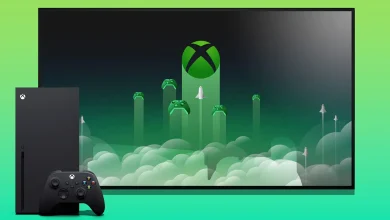
Introduction:
Cloud gaming has emerged as a revolutionary technology that allows players to stream video games over the internet, eliminating the need for expensive hardware and physical game installations. As the popularity of cloud gaming continues to rise, various types and models have emerged to cater to different preferences and needs. This article explores the diverse landscape of cloud gaming, highlighting different types and varieties available to players.
Subscription-Based Cloud Gaming:
Subscription-based cloud gaming services offer users access to a library of games for a fixed monthly fee. Players can stream and play games from the service’s catalog on a wide range of devices, including smartphones, tablets, PCs, and smart TVs. Examples of subscription-based cloud gaming platforms include:
Xbox Game Pass Ultimate:
Microsoft’s subscription service offers access to a vast library of Xbox and PC games, including first-party titles, indie games, and third-party releases. Subscribers can stream games directly to their devices or download them for offline play.
PlayStation Now:
Sony’s cloud gaming service allows users to stream a selection of PlayStation games to their PS4, PS5, or PC. The service offers a mix of classic and modern titles from the PlayStation catalog, with new games added regularly.
Google Stadia Pro:
Google’s cloud gaming platform offers a subscription-based service that provides access to a growing library of games for a monthly fee. Subscribers can stream games in up to 4K resolution with HDR support, along with exclusive discounts and free games each month.
Free-to-Play Cloud Gaming:
Free-to-play cloud gaming services allow users to access and play games without the need for a subscription fee. Players can stream free-to-play titles directly from the cloud gaming platform’s catalog, often supported by ads or in-game purchases. Examples of free-to-play cloud gaming platforms include:
NVIDIA GeForce Now:
NVIDIA’s cloud gaming service offers a free tier that allows users to play select games for up to one hour per session. Players can access their existing game libraries from platforms like Steam, Epic Games Store, and Uplay and steam them to compatible devices.
Amazon Luna:
Amazon’s cloud gaming service offers a library of free-to-play games as part of its Luna+ subscription, which also includes access to premium game channels. Luna subscribers can stream games directly to their devices without the need for additional purchases or downloads.
Pay-Per-Play Cloud Gaming:
Pay-per-play cloud gaming services allow users to rent or purchase individual games on a per-game basis, similar to traditional retail models. Players can stream games for a specified duration or purchase permanent access to the game, depending on the platform’s offerings. Examples of pay-per-play cloud gaming platforms include:
PlayStation Now:
In addition to its subscription-based model, PlayStation Now also offers the option to rent or purchase individual games from its catalog. Players can choose from a selection of titles and stream them for a limited time or download them for offline play.
Microsoft Xbox Cloud Gaming:
Microsoft’s cloud gaming service allows users to purchase individual games from the Xbox Game Pass catalog or other storefronts and stream them to compatible devices. Players can buy games outright or access them through their existing subscriptions.
Conclusion:
Cloud gaming offers a diverse range of options and models to cater to different preferences and needs. Whether players prefer subscription-based access to a library of games, free-to-play titles supported by ads or in-game purchases, or pay-per-play options for individual games, there is a cloud gaming service available to suit their preferences. As technology continues to evolve and improve, cloud gaming is poised to become an increasingly popular and accessible way for players to enjoy their favorite games anytime, anywhere.
Subscription-Based Cloud Gaming: A Gateway to Limitless Gaming Experiences
Introduction:
Subscription-based cloud gaming has revolutionized the gaming industry by providing players with access to a vast library of games without the need for expensive hardware or physical installations. This model allows gamers to stream and play their favorite titles on a wide range of devices, from smartphones to PCs and smart TVs, making gaming more accessible and convenient than ever before. In this article, we explore subscription-based cloud gaming, its benefits, popular platforms, and the impact it has on the gaming landscape.
Understanding Subscription-Based Cloud Gaming:
Subscription-based cloud gaming services offer users access to a curated library of games for a fixed monthly fee. Instead of purchasing individual titles, subscribers gain instant access to a diverse catalog of games that they can stream and play on-demand. These games are hosted on remote servers, and players can access them via an internet connection, eliminating the need for high-end gaming hardware or extensive downloads.
Benefits of Subscription-Based Cloud Gaming:
Access to a Vast Library of Games:
One of the primary benefits of subscription-based cloud gaming is the access it provides to a vast library of games. Subscribers can explore and play a wide range of titles, including popular AAA releases, indie gems, and classic favorites, without the need to purchase each game individually.
Convenience and Accessibility:
Cloud gaming platforms offer unparalleled convenience and accessibility, allowing players to stream games on a variety of devices, including smartphones, tablets, laptops, and smart TVs. This flexibility enables gamers to enjoy their favorite titles anytime, anywhere, without being tied to a specific gaming console or PC.
Cost-Effective Gaming Solution:
Subscription-based cloud gaming offers a cost-effective alternative to traditional gaming models. Instead of purchasing expensive gaming hardware and individual game titles, players can access a vast library of games for a fraction of the cost, making gaming more accessible to a broader audience.
Instant Access and Seamless Experience:
With subscription-based cloud gaming, players can enjoy instant access to their favorite games without the need for lengthy downloads or installations. The streaming technology used by cloud gaming platforms ensures a seamless and responsive gaming experience, with minimal input lag and high-quality graphics.
Popular Subscription-Based Cloud Gaming Platforms:
Xbox Game Pass Ultimate:
Microsoft’s Xbox Game Pass Ultimate offers subscribers access to a vast library of games, including first-party Xbox titles, indie releases, and third-party titles. Subscribers can stream games directly to their Xbox consoles, PCs, or mobile devices, as well as download select titles for offline play.
PlayStation Now:
Sony’s PlayStation Now service provides subscribers with access to a diverse catalog of PlayStation games, including classic titles from previous generations and modern releases. Subscribers can stream games to their PS4, PS5, or PC, as well as download select titles for offline play.
Google Stadia Pro:
Google’s Stadia Pro subscription service offers subscribers access to a growing library of games, including AAA releases and indie titles. Subscribers can stream games in up to 4K resolution with HDR support, as well as enjoy exclusive discounts and free games each month.
Impact on the Gaming Landscape:
Subscription-based cloud gaming has had a significant impact on the gaming landscape, democratizing access to gaming experiences and fostering a more inclusive gaming community. By removing barriers to entry, such as expensive hardware and upfront costs, cloud gaming platforms have attracted a broader audience of gamers, including casual players, mobile gamers, and those with limited gaming budgets. Additionally, subscription-based cloud gaming has spurred innovation in game development, with developers creating new experiences optimized for streaming and cross-platform play.
Conclusion:
Subscription-based cloud gaming represents the future of gaming, offering players access to a vast library of games with unparalleled convenience and accessibility. With platforms like Xbox Game Pass Ultimate, PlayStation Now, and Google Stadia Pro leading the way, subscription-based cloud gaming continues to redefine the gaming landscape, empowering players to explore new worlds, discover new experiences, and connect with a global community of gamers. As technology continues to evolve, subscription-based cloud gaming will undoubtedly play a central role in shaping the future of interactive entertainment.
Introduction to Cloud Gaming
As a passionate gamer, I am constantly on the lookout for the latest innovations in the gaming industry. One such innovation that has taken the gaming world by storm is cloud gaming. In this comprehensive guide, I will take you through the different types of cloud gaming, its benefits, popular platforms, a comparison with traditional gaming, the challenges it faces, and its future potential. So, buckle up and get ready to dive into the world of cloud gaming!
Understanding the Concept of Cloud Gaming
Cloud gaming is a revolutionary technology that allows gamers to stream and play games directly from servers located in data centers, eliminating the need for high-end gaming hardware. The games are rendered on powerful servers and then streamed to the player’s device in real-time. This means that gamers can enjoy high-quality, graphically-intensive games on low-end devices such as laptops, smartphones, or even smart TVs without the need for expensive upgrades. The concept of cloud gaming is built on the idea of remote computing. Instead of relying on the processing power of the player’s device, cloud gaming offloads the heavy lifting to the servers in the data centers. This not only allows gamers to play games without the need for expensive hardware but also enables them to access their games from anywhere, as long as they have a stable internet connection.
Cloud gaming opens up a whole new world of possibilities for gamers, making high-quality gaming accessible to a wider audience. Whether you’re a casual gamer or a hardcore enthusiast, cloud gaming has something to offer for everyone.
Benefits of Cloud Gaming
Cloud gaming comes with a host of benefits that make it an attractive option for gamers. One of the biggest advantages is the elimination of hardware limitations. With cloud gaming, you no longer need to invest in expensive gaming consoles or high-end PCs to enjoy the latest games. All you need is a compatible device and a stable internet connection, and you’re good to go. Another major benefit of cloud gaming is the convenience it offers. Since the games are stored and processed on remote servers, you don’t need to worry about downloading or installing the games on your device. This saves you valuable storage space and allows you to start playing the games almost instantly. Additionally, cloud gaming platforms often provide a wide selection of games, giving you access to a vast library of titles without the need to purchase each game individually. Cloud gaming also offers the flexibility to play games on multiple devices. You can start playing a game on your smartphone during your commute and seamlessly continue playing on your laptop or TV when you get home. This seamless transition between devices makes cloud gaming a truly versatile and convenient option for gamers.
Different Types of Cloud Gaming
There are three main types of cloud gaming: browser-based cloud gaming, downloadable cloud gaming, and streaming cloud gaming. Let’s take a closer look at each type.
Browser-based Cloud Gaming
Browser-based cloud gaming allows you to play games directly through your web browser without the need for any additional software or downloads. All the processing and rendering of the games happen on the remote servers, and the video and audio are streamed to your device in real-time. This type of cloud gaming is particularly convenient as it eliminates the need for any installations or updates.
One of the key advantages of browser-based cloud gaming is its compatibility with a wide range of devices. As long as your device has a web browser and a stable internet connection, you can enjoy high-quality gaming without the need for any additional hardware or software. This makes it an accessible option for casual gamers who may not have dedicated gaming devices.
Downloadable Cloud Gaming
Downloadable cloud gaming, as the name suggests, involves downloading a client application to your device to access and play the games. The client application acts as a gateway to the cloud gaming platform, allowing you to browse and download games from the platform’s library. Once the game is downloaded, it can be played offline, making it a suitable option for gamers who may not always have access to a stable internet connection. Downloadable cloud gaming offers the advantage of reduced latency compared to streaming cloud gaming. Since the game is downloaded and stored locally on your device, the input lag is minimized, resulting in a smoother and more responsive gaming experience. However, this type of cloud gaming does require sufficient storage space on your device to accommodate the downloaded games.
Streaming Cloud Gaming
Streaming cloud gaming is perhaps the most popular and widely-used type of cloud gaming. It involves streaming the games directly to your device without the need for any downloads or installations. The games are processed and rendered on the remote servers, and the video and audio are streamed to your device in real-time. This type of cloud gaming offers the advantage of instant access to a vast library of games without the need for any additional hardware or software. One of the key benefits of streaming cloud gaming is its ability to deliver high-quality, graphically-intensive games to low-end devices. Since the games are rendered on powerful servers, you can enjoy a visually-stunning gaming experience even on devices that may not have the processing power to run the games locally. However, streaming cloud gaming does require a stable and high-speed internet connection to ensure a smooth and lag-free gaming experience.
Popular Cloud Gaming Platforms
Now that we have a good understanding of the different types of cloud gaming, let’s take a look at some of the most popular cloud gaming platforms available today.
Google Stadia
Google Stadia is a cloud gaming platform developed by Google. It allows gamers to stream games directly to their devices without the need for any additional hardware. The platform offers a wide selection of games, including popular titles from various genres. With features like state share and crowd play, Google Stadia aims to redefine the gaming experience by allowing players to share their game states with others and seamlessly join multiplayer games with content creators.
Nvidia GeForce Now
Nvidia GeForce Now is a cloud gaming platform developed by Nvidia. It allows gamers to stream games from their existing libraries on platforms like Steam, Epic Games Store, and Uplay. The platform supports a wide range of devices, including PCs, Macs, and Android devices. With features like ray tracing and DLSS (Deep Learning Super Sampling), Nvidia GeForce Now aims to provide gamers with a high-quality gaming experience even on low-end devices.
Xbox Cloud Gaming (formerly xCloud)
Xbox Cloud Gaming, previously known as xCloud, is a cloud gaming platform developed by Microsoft. It allows gamers to stream games from their Xbox console directly to their devices. The platform offers a vast library of games, including Xbox Game Pass titles, allowing players to access a wide range of games with a single subscription. With features like cross-platform play and cloud saves, Xbox Cloud Gaming aims to provide a seamless gaming experience across devices.
Cloud Gaming vs Traditional Gaming
Now that we have explored the different types of cloud gaming and some popular platforms, let’s compare cloud gaming with traditional gaming in terms of cost, performance, and accessibility.
Cost Comparison
One of the major advantages of cloud gaming is its cost-effectiveness. With traditional gaming, you need to invest in expensive gaming hardware like consoles or high-end PCs to play the latest games. Additionally, you need to purchase each game individually, which can quickly add up. In contrast, cloud gaming platforms often offer subscription models that give you access to a vast library of games for a fixed monthly fee. This not only saves you money but also allows you to try out a wide range of games without the need to purchase each one separately.
Performance Comparison
When it comes to performance, traditional gaming has the edge. High-end gaming hardware can deliver superior graphics, higher frame rates, and lower input lag compared to cloud gaming. However, cloud gaming has made significant strides in recent years, and platforms like Google Stadia and Nvidia GeForce Now can deliver a high-quality gaming experience even on low-end devices. While the performance may not be on par with traditional gaming, cloud gaming offers a viable alternative for gamers who may not have access to expensive gaming hardware.
Accessibility Comparison
Accessibility is where cloud gaming truly shines. With traditional gaming, you are limited to playing games on specific devices like consoles or PCs. In contrast, cloud gaming allows you to play games on a wide range of devices, including smartphones, tablets, and smart TVs. This means that you can enjoy your favorite games wherever you are, as long as you have a compatible device and a stable internet connection. Cloud gaming also offers the advantage of seamless transition between devices, allowing you to pick up where you left off without any interruptions.
Challenges and Concerns of Cloud Gaming
While cloud gaming offers numerous benefits, it also faces certain challenges and concerns that need to be addressed. Let’s take a closer look at some of these challenges.
Internet Connection Requirements
One of the key requirements for cloud gaming is a stable and high-speed internet connection. Since the games are streamed in real-time, a slow or unstable connection can result in lag, stuttering, and reduced image quality. This can significantly impact the gaming experience and make it frustrating to play certain games. Additionally, cloud gaming requires a significant amount of data to be transferred, which can be a concern for users with limited data plans or those living in areas with poor internet infrastructure.
Latency Issues
Latency, or input lag, is another challenge that cloud gaming needs to overcome. Since the games are processed on remote servers, there is a delay between the player’s input and the corresponding action on the screen. While advancements in technology have reduced the input lag to a great extent, it can still be noticeable, especially in fast-paced games that require quick reflexes. Minimizing latency is crucial for a smooth and responsive gaming experience, and cloud gaming platforms are constantly working on improving this aspect.
Ownership and Control
One of the concerns raised by gamers is the issue of ownership and control. With traditional gaming, you own the physical copy of the game, allowing you to play it whenever you want, even without an internet connection. In contrast, cloud gaming relies on the availability of internet access and the servers of the cloud gaming platform. If the platform shuts down or removes a game from its library, you may lose access to the game even if you have paid for it. This lack of ownership and control is a valid concern for many gamers and something that cloud gaming platforms need to address to gain wider acceptance.
The Future of Cloud Gaming
Despite the challenges it faces, cloud gaming has a promising future ahead. Let’s take a look at some of the factors that will shape the future of cloud gaming.
Technological Advancements
As technology continues to evolve, we can expect significant advancements in cloud gaming. Faster internet speeds, reduced latency, and improved video compression algorithms will contribute to a smoother and more immersive gaming experience. We can also expect the development of more powerful servers and data centers, enabling the rendering of even more graphically-intensive games in the cloud. With the advent of 5G technology, cloud gaming will become even more accessible and widespread.
Integration with Other Entertainment Mediums
Cloud gaming has the potential to integrate with other entertainment mediums, blurring the lines between gaming, movies, and television shows. We can expect the development of interactive experiences that combine elements of gaming and storytelling, allowing players to become active participants in the narrative. Cloud gaming platforms may partner with content creators to develop exclusive games and experiences that tie in with popular movies, TV shows, and franchises, creating a new form of entertainment that transcends traditional boundaries.
Potential Impact on the Gaming Industry
Cloud gaming has the potential to disrupt the traditional gaming industry in significant ways. With the elimination of hardware limitations, more players will have access to high-quality gaming experiences, leading to a larger and more diverse gaming community. This, in turn, will drive the demand for new and innovative games, pushing game developers to explore new genres, gameplay mechanics, and storytelling techniques. Cloud gaming also has the potential to democratize game development, allowing independent developers to reach a wider audience and compete with established studios.
Tips for Getting Started with Cloud Gaming
Now that you’re familiar with the different types of cloud gaming and its future potential, here are some tips to help you get started on your cloud gaming journey.
Choosing the Right Platform
Before diving into cloud gaming, take the time to research and compare different platforms to find the one that best suits your needs. Consider factors like game selection, subscription models, device compatibility, and performance. Read reviews and user feedback to get an idea of the overall gaming experience offered by each platform. Remember, what works for one person may not work for another, so choose a platform that aligns with your preferences and requirements.
Internet Speed and Stability
A stable and high-speed internet connection is crucial for a smooth and lag-free gaming experience. Before starting cloud gaming, check your internet speed and ensure that it meets the minimum requirements of the platform you choose. Consider connecting your device to a wired connection for a more reliable and consistent connection. If you have a data cap or limited bandwidth, keep an eye on your usage to avoid exceeding your limits.
Game Selection and Subscription Models
Take some time to explore the game selection offered by the cloud gaming platform. Look for platforms that offer a wide range of games across different genres and categories. Consider whether the platform offers a subscription model, which can give you access to a vast library of games for a fixed monthly fee. Evaluate the value for money offered by the subscription model and choose a platform that aligns with your gaming preferences and budget.
Conclusion:
Embracing the Future of Gaming with Cloud Gaming
Cloud gaming is a game-changer in the world of gaming. It offers a convenient, cost-effective, and accessible way to enjoy high-quality games on a wide range of devices. While it still faces certain challenges and concerns, the future of cloud gaming looks incredibly promising. With technological advancements, integration with other entertainment mediums, and its potential impact on the gaming industry, cloud gaming is set to revolutionize the way we play and experience games. So, whether you’re a casual gamer looking for a convenient way to enjoy your favorite games or a hardcore enthusiast seeking the next big innovation, cloud gaming has something to offer for everyone. Embrace the future of gaming and embark on your cloud gaming journey today!











